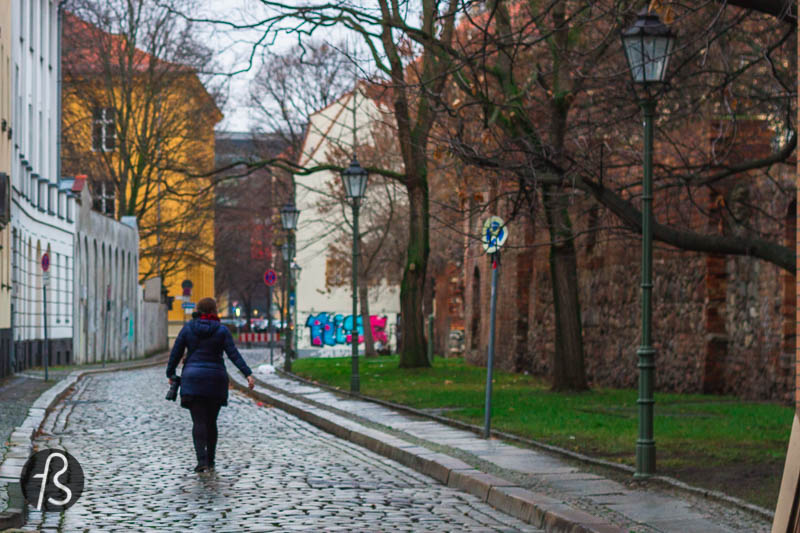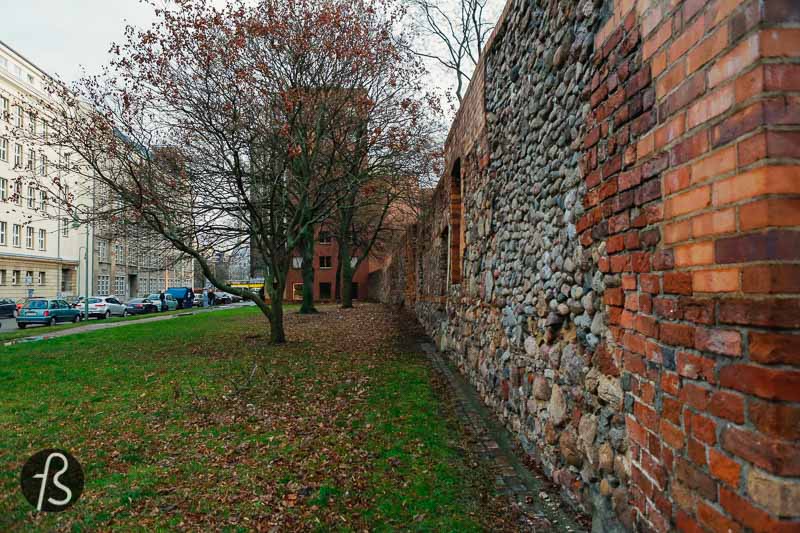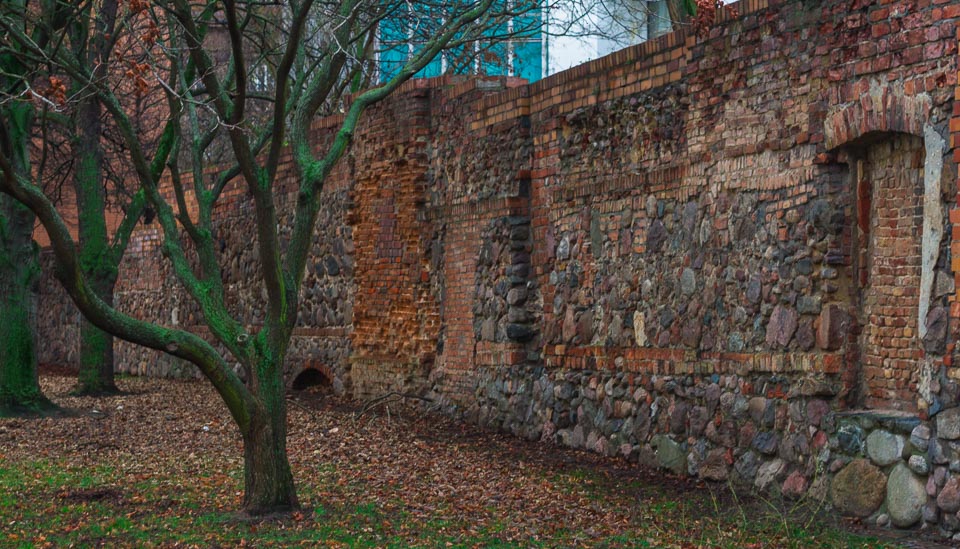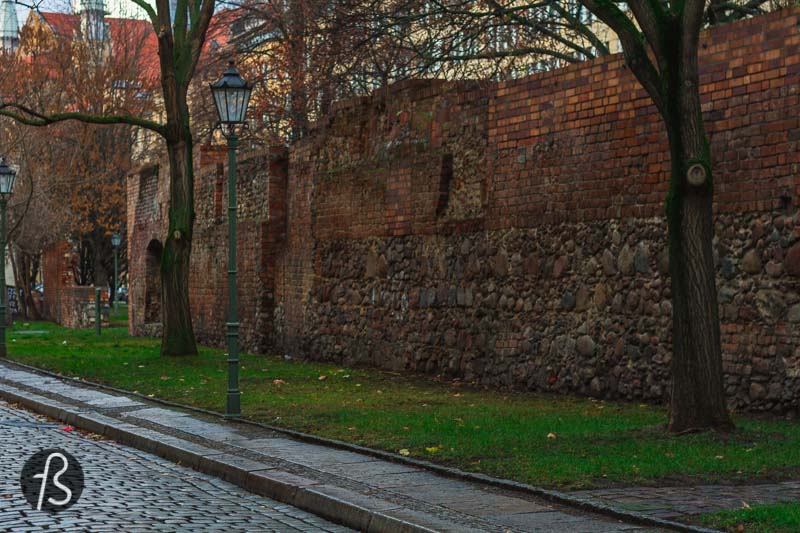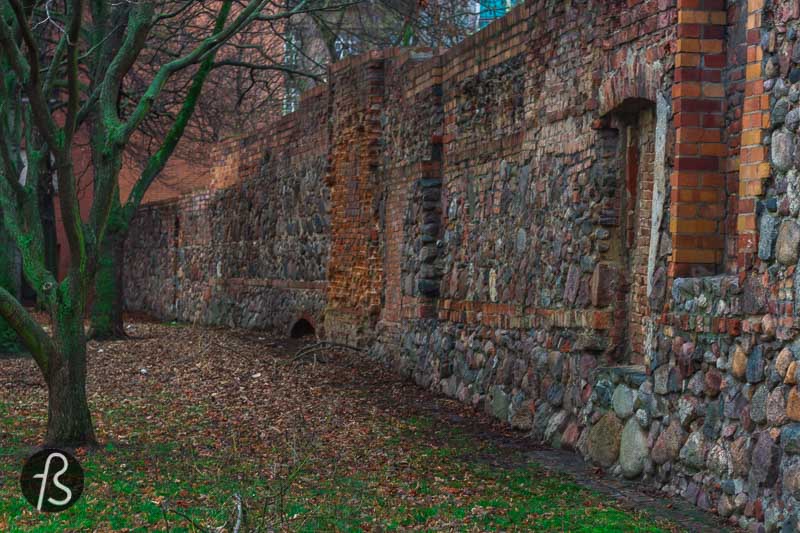Most people that visit Berlin know the history behind the wall that divided the city during the Cold War. But there is another historic wall waiting to be discovered in the middle of the town. This is the Old City Wall of Berlin that witnesses the medieval past of the city and can be found close to Alexanderplatz.
If you walk around the U-Bahnhof Klosterstraße, you will find your way into Littenstraße. There you can see some reddish-brown walls made of a combination of different materials. Bricks, stones, large rocks, these were added and removed through the centuries. Now there are around 150 meters of the former the first of Berlin wall still standing. From the 2.5km that existed in the past, only a small piece survived as the rear walls of houses in the area.
Sometimes called the Berlin Stadtmauer, the medieval wall of Berlin was erected back in the 13th century to protect the city. This defensive barrier was highly needed since there is nothing else in the landscape where you can build a fort or a castle and protect the area.
Through time, Berlin grew and grew, and its medieval borders became a part of the past. With an ever growing city, the stones, bricks, and other medieval wall pieces were repurposed on other buildings in the area. Some of them probably went to the neighbor Franziskaner-Klosterkirche. Others might have been used to construct the Zur letzten Instanz, Berlin’s oldest restaurant, dating back to 1621 and another wall neighbor.
By the 18th century, Berlin’s city wall didn’t mark the city limits anymore, and another wall was built around it. This wall was used to tariff products entering and leaving the city and became known as the Berlin Customs Wall. There were two Berlin walls before the city was divided during the Cold War with another Berlin Wall if you are still following.
This medieval Berlin wall was forgotten through time, and it was only in 1948, after the Second World War, that they were discovered. During the cleanup of wartime debris, the wall’s stretch was found and declared a city landmark.
Today, you can visit the remains of the medieval city walls and try to imagine how Berlin used to be at the time. You can find this older version of the Berlin Wall around Littenstraße and Waisenstraße, in Mitte.
We wrote something about the medieval past of Berlin when we talked about the Franziskaner-Klosterkirche and its ruins. This building is close to the first wall of Berlin, and you should explore both when you are there, close to Alexanderplatz.
The Old City Wall of Berlin
Littenstraße with Waisenstraße
Berlin-Mitte, 10179
Germany
If you like what you read here, you should join our Discord channel; there, you will find a place for open discussions about all the themes we talk about here, and it is a free space for you to share your questions, comments and suggestions.
If you are not a fan of the platform, you also can join us on our Facebook group or our Twitter and Instagram. We usually post all the lovely images we see and do there, together with curating the best links of all World Wide Web. No joke!
Subscribe to our newsletter for discounts in hotels and photo gear, freebies and much more.
